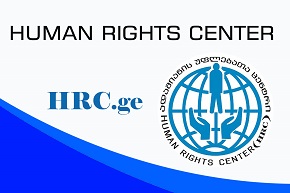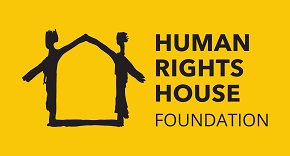
They are free and independent people-all journalists having visited the Dukhabors in the Javakheti region described them with these words. Nowadays, these people are deprived of their freedom and independence. Fear and desire of getting over the hard situation can be noticed in their eyes. They do not have any wish to speak with journalists and hide in their homes. “Minorities are suppressed here and we will soon abandon the area,” said Dukhabors who have spent 160 years in Georgia.
Way from Akhaltsikhe to Ninotsminda
There is 120 km till Ninotsminda or Bogdanovka as it was called in the past (elderly generation should have known the district with that name only). I will endure the destroyed road and driver’s complaints on my way to Ninotsminda. “We will have to drive shaking for three hours while we could have reached the place in an hour and half if the road had been repaired.” Neither tape-recorder could hash the complaints of the driver. AS soon as the car drops in the hole, the recorder starts wheezing and driver Iura begins winging once more “This road will never be repaired. You should see what kind of road they have beyond Georgian boundaries, the car is moving itself,” regrets Iura and rests his suntanned arms on the window frame. It is too hot. There is terrible dust on the road. If a car overtakes us, we cannot see anything for several minutes. A road in Ninotsminda is a great relief, though it lasts until you pass the regional center. Then good road stays behind and you have to get used to holes again.
 A horse-cart approached us from the field side; it is the most convenient means of transport for local people. “Where are you going?” the man asked. A woman with white scarf is sitting next to him and she is holding a child in her hands. The child is complaining. We had one way to the village and the woman sat in our car. As soon as they moved into our car, eighteen-month-old Elene fell asleep. Our passenger turned out to be very reserved. Having parted with us, she thanked us and went away. “Local Armenian women are similar,” Iura explained to me.
A horse-cart approached us from the field side; it is the most convenient means of transport for local people. “Where are you going?” the man asked. A woman with white scarf is sitting next to him and she is holding a child in her hands. The child is complaining. We had one way to the village and the woman sat in our car. As soon as they moved into our car, eighteen-month-old Elene fell asleep. Our passenger turned out to be very reserved. Having parted with us, she thanked us and went away. “Local Armenian women are similar,” Iura explained to me.
We noticed a village in the distance. After three-hour-journey we reached the Dukhabors’ village of Gorelovka. The village had been very large from the very beginning but now it is not so anymore.
Religious course of Dukhabors originated in 1740. Late in XVIII century the government started repressions against Dukhabors. These people were persecuted, arrested or executed.
In 1801, under Aleksandre I decree, Dukhabors were executed to Crimea. Russian Emperor always treated Dukhabors kindly and the residents of Ninotsminda still remember that kind treatment. They recall the Emperor with respect today.
In 40s Dukhabors from Tavria were resettled to Georgia-to present Ninotsminda district and in the Elizavetpol district of Tbilisi Province. Consequently, Russian villages were founded and they are-Orlovka, Gorelovka, Spasovka, Efremovka, etc.
By 90s the number of Dukhabors reached 4 000. But today they are only 500. During this long period, two great migrations started in Brianski and Tulski area.
There is no tree to be seen to shelter under its shadow. Thus you feel hotter. Nobody is moving along the street.
Big blue wooden gate and the yard surrounded with stone fence attract our attention. There is different world beyond the fence. If there is only barren land outside, everything is green in the yard. There is Dukhabors’ temple in the yard. Dukhabors have neither clergyman nor church, According to heir faith; a man is the God and Icon. So they do not have any icons in their temple.
The hut is built with large stones, and it is painted in blue. Small, wooden windows are decorated with Russian carving. White curtains are hanging on the windows and there are flowers on the window sills.
There are chairs along the walls of the rooms in the temple. Men are sting on one side and women are sitting on the other side. There are big Russian stoves in every room.
Dukhabors go to prayers dressed in their national clothes. There is always an eglantine flower-so called wild rose- on their clothes. It means Dukhabor has increased in his strength and faith.
Forty-year-old mother of three children, Olga Medvedeva is looking after the temple. “The temple was built in 1883. Every Sunday parish comes here at 6:00 PM and we pray. It is great responsibility to look after the house,” said the woman. Her two children live in Russia. Only youngest son, daughter-in-law and grandchild live with her. Olga is going to leave Georgia with her family soon. “I have no land to earn my living. We might leave the country soon. Nothing can keep me here,” said Olga Medvedeva.
Land-Source to Earn One’s Living
 Dukhabors’ problems regarding the land started since Armenian people were gradually settled in their villages after the first migration.
Dukhabors’ problems regarding the land started since Armenian people were gradually settled in their villages after the first migration.
“Dukhabors are not allowed to cultivate the land. They demand to register the plots on them. Other villagers have illegally occupied the land and cultivate plots. These violators are supported by those people who want to get hold of the land of Gorelovki,” said Temur Atunashvili, the head of the Regional Office of the Association for Estate Holders Rights.
“There is some more land besides the leased out plots. But the land was not enough for newcomers and they started to appropriate the leased out plots,” said Dukhabors.
During Communist Regime, Dukhabors set up cooperative instead of collective farm. According to their statement, 2 695 acres of arable land, 1 225 acres of mowing land and 2 860 acres of pasture were officially registered on the Gorelovki Cooperative.
In 2006 the land was distributed on villagers. The Administrative Board left only 650 acres of arable and mowing land to the cooperative.
“The people want to leave the place because the land is too crucial problem for them. Very little land was left for us in the cooperative. We have applied to a lot of people for help but there is no result. How can we earn our living? So we are abandoning the village,” said Ana Rivkina, director of the Gorelovki public school # 1.
“My son lives in Tula and I will go there too. What shall I do here? It is my homeland but all my relatives live in Russia and besides that I have nothing to keep myself here. It will be too difficult to departure and leave everything but we might get used to new environment. Here we endure such hard life and we will survive there too,” said fifty-year-old Palina Baturina.
“There is such a law in Georgia: First of all local people must be satisfied with land and then the others can receive plots. This law does not work here. Armenian people have got hold of everything in the village. If you say something it turns into quarrel. We do not want argument. We are peaceful people and with this character we have already lost much. They tell us to be satisfied with the land we have and we have obeyed their directives,” said Vasil Slastukhin.
Gulo Kokhodze, Ninotsminda



